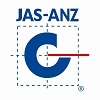Johanna Ohm is a graduate student in biology at Pennsylvania State University We live in a dirty world
Johanna Ohm is a graduate student in biology at Pennsylvania State University
 We live in a dirty world. Wherever we go, we are among microbes. Bacteria, fungi and viruses live on our phones, bus seats, door handles and park benches. We pass these tiny organisms to each other when we share a handshake or a seat on the plane.
We live in a dirty world. Wherever we go, we are among microbes. Bacteria, fungi and viruses live on our phones, bus seats, door handles and park benches. We pass these tiny organisms to each other when we share a handshake or a seat on the plane.
Now, researchers are finding we also share our microbes through our money. From tip jars to vending machines to the meter maid – each dollar, passed person to person, samples a bit of the environment it comes from, and passes those bits to the next person, the next place it goes.
The list of things found on our dollars includes DNA from our pets, traces of drugs, and bacteria and viruses that cause disease.
The findings demonstrate how money can silently record human activities, leaving behind so-called “molecular echoes.”
In April, a new study identified over a hundred different strains of bacteria on dollar bills circulating in New York City. Some of the most common bugs on our bills included Propionibacterium acnes, a bacteria known to cause acne, and Streptococcus oralis, a common bacteria found in our mouths.
The research team, led by biologist Jane Carlton at New York University, also discovered traces of DNA from domestic animals and from specific bacteria that are associated only with certain foods.
A similar study recovered traces of DNA on ATM keypads, reflecting the foods people ate in different neighborhoods. People in central Harlem ate more domestic chicken than those in Flushing and Chinatown, who ate more species of bony fish and mollusks. The foods people ate transferred from fingers to touchscreens, where scientists could recover a bit of their most recent meals.
We don’t leave only food behind. Traces of cocaine can be found on almost 80 percent of dollar bills. Other drugs, including morphine, heroin, methamphetamine and amphetamine, can also be found on bills, though less commonly than cocaine.
Identifying foods people eat or the drugs people use based on interactions with money might not seem all that useful, but scientists are also using these types of data to understand patterns of disease. Most of the microbes the researchers in New York identified do not cause disease. But other studies have suggested that disease-causing strains of bacteria or virus could be passed along with our currency.
Bacteria that cause food-borne illness – including Salmonella and a pathogenic strain of E.coli – have been shown to survive on pennies, nickels and dimes and can hide out on ATM machines. Other bacteria, such as methicillin-resistant Staphylococcus aureus (MRSA) which causes skin infections, are found on bank notes in the U.S. and Canada, but the extent to which they could spread infections is unknown.
Try as we may to avoid exposure to germs, they travel with us and on us. Even if disease-causing microbes can survive in places like ATMs, the good news is that most exposures don’t make us sick.
Disease transmission linked to money is rare, and no major 서귀포출장안마 disease outbreaks have started from our ATMs. Although it doesn’t seem common for diseases to transmit through money, there are ways we could make our money cleaner.
Researchers are working on ways to clean money between transactions. Putting older bills through a machine that exposes them to carbon dioxide at a specific temperature and pressure can strip dollar bills of oils and dirt left behind by human fingers, while the heat kills microbes that would otherwise linger.
U.S. money is still made from a blend of cotton and linen, which has been shown to have higher bacterial growth than plastic polymers. Several countries are transitioning from money made of natural fibers to plastic, which may be less friendly to bacteria. Canada has had plastic money since 2013, and the U.K. transitioned to a plastic-based bank note last year.
Even if our money is not directly responsible for spreading disease, we can still use the dollar’s travel history to track how we spread disease in other ways. The website WheresGeorge.com, created in 1998, lets users track dollar bills by recording their serial numbers. In the almost 20 years since the site’s creation, WheresGeorge has tracked the geographic locations of bills totaling over a billion dollars.
Now, physicists at the Max Planck Institute and University of California, Santa Barbara are using data from the WheresGeorge site to track epidemics. Information on human movement and contact rates from WheresGeorge was even used to predict the spread of the 2009 swine flu.
Although we don’t know the extent to which money allows diseases to spread, mom’s advice is probably best when handling cash: Wash your hands and don’t stick it in your mouth.
This article was originally published on The Conversation.



No comments